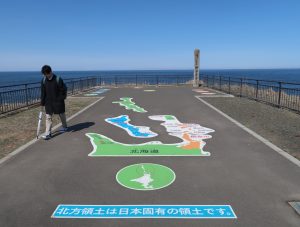The war in Ukraine, 8,000 kilometers away, may seem distant to most inhabitants of the Japanese archipelago. But there is an exception: the people of Hokkaido. From here, Russia is close – very close, just across the bay. You don’t even need a pair of binoculars; you can see it with your naked eyes, as I did during a recent visit to northeast Hokkaido.
One of the Russian islets of Habomai is just 3.7 kilometers away. For comparison, the longest bridge in Japan is the Akashi bridge in Kobe, which is 3.9 km long. Were these friendly neighbors, Japan and Russia could share expenses and build a bridge, which people could use to literally walk between the countries.
But these are not friendly neighbors – not anymore, at least. Certainly not since Russian President Vladimir Putin ordered the invasion of Ukraine, and Japan, along with other 30 other countries, imposed sanctions on Russia. But the hostility didn’t begin with Ukraine. It goes far back into the past – 77 years, to be precise.
It was the end of World War II. On August 8, just days after the United States dropped the world’s first nuclear bomb on Hiroshima, the Soviet Union suddenly declared war on Japan, breaking their neutrality agreement. Ten days later, after the atomic bombing of Nagasaki and after Japan had already agreed to an unconditional surrender to the United States, Soviet soldiers swept through Japan’s Northern Territories, occupying the islands of Kunashiri, Habomai, Etorofu, and Shikotan.
The four islands (known as the Southern Kurils in Russia) had been Japanese-owned since 1855, when Russia and Japan agreed in the Treaty of Shimoda that they belonged to Japan. In 1945, they were home to Japanese citizens, along with their tatami houses and hot spring baths.
When the Soviet Union invaded the islands, Japan couldn’t possibly defend itself. The country was already on its knees; Hiroshima and Nagasaki were still hot from the U.S. nuclear bombs. For the Soviets it was like stealing candy from a baby; resistance was futile. It was the first time that the people living on the islands had seen conflict – prior to the Soviet invasion, World War II had not touched their shores.
In the aftermath, 17,000 Japanese citizens were sent off to the mainland, but it didn’t happen overnight. For most of them it was a long ordeal that lasted years. There are still around 5,000 survivors of that forced exodus in the Nemuro area; I went to Hokkaido to interview two of them.

































